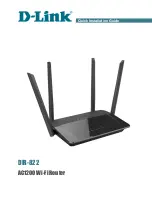
115
Table 9
Main authentication page file names
Main authentication page
File name
Logon page
logon.htm
Logon success page
logonSuccess.htm
Logon failure page
logonFail.htm
Online page
Pushed after the user gets online for online notification
online.htm
System busy page
Pushed when the system is busy or the user is in the logon process
busy.htm
Logoff success page
logoffSuccess.htm
NOTE:
You can define the names of the files other than the main authentication page files. The file names and
directory names are case-insensitive.
Rules on page requests
The local portal server supports only Post and Get requests.
Get requests are used to get the static files in the authentication pages and allow no recursion. For
example, if file Logon.htm includes contents that perform Get action on file ca.htm, file ca.htm
cannot include any reference to file Logon.htm.
Post requests are used when users submit username and password pairs, log on the system, and log
off the system.
Rules on Post request attributes
1.
Observe the following requirements when editing a form of an authentication page:
An authentication page can have multiple forms, but there must be one and only one form whose
action is
logon.cgi
. Otherwise, user information cannot be sent to the local portal server.
The username attribute is fixed as
PtUser
, and the password attribute is fixed as
PtPwd
.
Attribute
PtButton
is required to indicate the action that the user requests, which can be
Logon
or
Logoff
.
A logon Post request must contain
PtUser
,
PtPwd
, and
PtButton
attributes.
A logoff Post request must contain the
PtButton
attribute.
2.
Authentication pages
logon.htm
and
logonFail.htm
must contain the logon Post request.
The following example shows part of the script in page
logon.htm
.
<form action=logon.cgi method = post >
<p>User name:<input type=“text” name = “PtUser” style=“width:160px;height:22px”
maxlength=64>
<p>Password :<input type=“password” name = “PtPwd” style=“width:160px;height:22px”
maxlength=32>
<p><input type=SUBMIT value=“Logon” name = “PtButton” style=“width:60px;”>
</form>
3.
Authentication pages
logonSuccess.htm
and
online.htm
must contain the logoff Post request.
















































